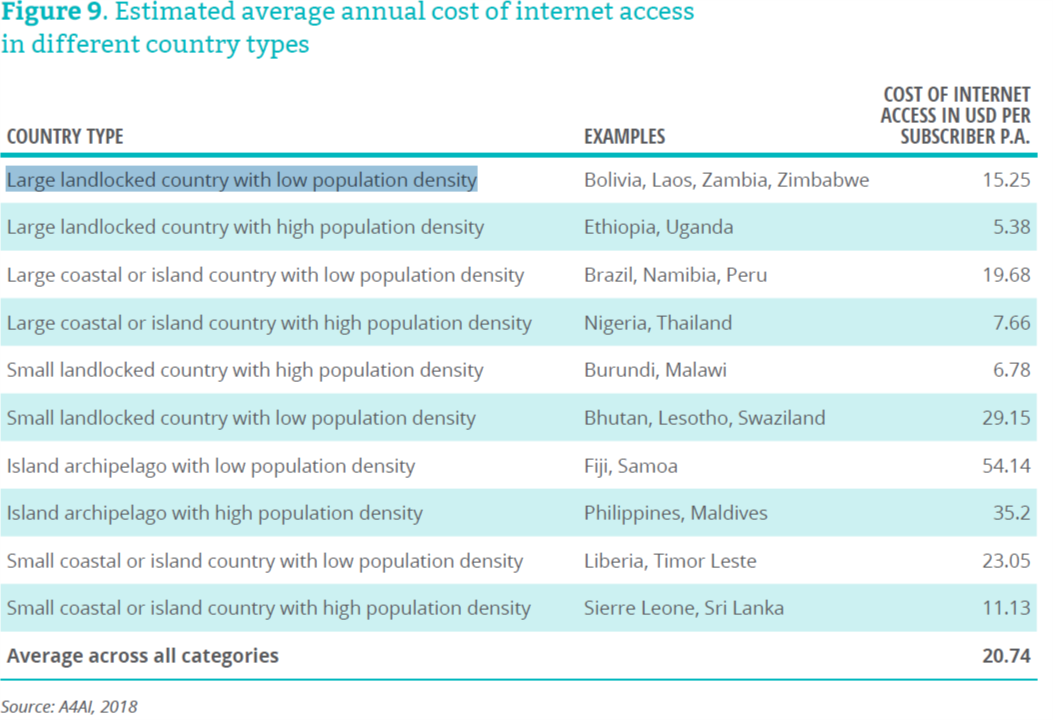Some things in life are certain. The sun will always rise from the East. Without oxygen we are doomed and so forth and so on. It seems another thing that can be a part of that list is the fact that internet connectivity in Zimbabwe will always be expensive. At least that will be the case for the foreseeable future.
Costs keep rising too…
The cost for internet access has recently been rising as well. We already have the second most expensive mobile data in Africa and to top it off internet service providers such as ZOL and TelOne have also been increasing their pricing. Granted, this is because the economic situation is not too great but the reality is the consumers have been at the receiving end of a hard stick for a while now. Even before the economic crisis.
There have been a number of theories thrown about as to why internet access is so expensive but the Alliance for Affordable Internet’s (A4AI) 2018 Affordability Report went a long way in explaining why internet access is so expensive in our country.
So what gives?
Well, one of the things that affect pricing drastically includes geography. Two factors are specific problems:
Small countries
If a country has either a small population or a small surface area then you are in trouble. If you know anything about Zim, you’ll know that we fit into the low population category and that’s where our troubles start.
Because we have a small population, we have a harder time realising economies of scale. Compared to countries such as Kenya with over 50 million people, broadband coming to Zimbabwe can only be consumed by a maximum of around 16 million. That’s before we actually look at who among these people can afford it and other factors affecting usage.
Secondly, countries with a low population density see increased fixed costs of network coverage and higher unit costs, as a result of the disproportionately higher per user cost of the national backbone network.
Landlocked countries
Landlocked countries (that’s us again) are also in trouble. Why? Countries such as ours incur additional costs because of the need to lease international transit capacity. In order to connect we need to pay transit costs and the premiums are worse off if you do not have a choice or the flexibility offered by being a coastal nation. Economies of scale also apply again in the negotiation of these deals and the lower your population the less bargaining power you have as a country.
Where do we rank?
In terms of countries affected by geography, Zimbabwe ranked in the top-tier (most expensive) in a list of the estimated average annual cost of internet access in different country types.
Zim, Bolivia, Zambia and Laos where classified as Large landlocked country with low population density and because that’s the case; cost of internet access in USD per subscriber p.a was at $15.25. There are some countries that actually have it worse though (see table below).
Countries such as Ethiopia and Uganda which are landlocked but have high population densities are faring much better as they just $5.38. Nearly a third of what we are paying. In fact, subscribers in these two countries actually shelled out the least among all countries compared. Just because we are landlocked does not mean all hope is lost.

What can be done?
This coupled along with the fact that regulation and policy in our country has not been set to encourage internet usage means we have too many forces working against us. The quickest fix can be on the policy front and ensuring that use cases for the internet are established encouraging use of the internet. When it comes to the population… Well, you know what you have to do to fix that…

3 comments
At least condoms are now very expensive, so the low population part will fix itself.
you forgot to mention exorbitant potraz license fees, they are the main contributor to the cost !!
Low population is certainly a factor across all industries in terms competitive costing. Thats why there is a direct correlation between population and a country’s economic development. Look at China. The moment it hit highest population its economic status changed. India is showing the same signs.
Was just contemplating the possibility of Zambia, Zimbabwe, Malawi and Botswana buying bulk with Zimbabwe as an internet hub, then distributing to the region since we are central….